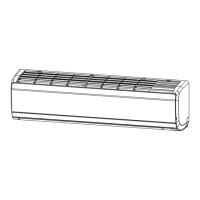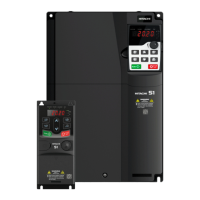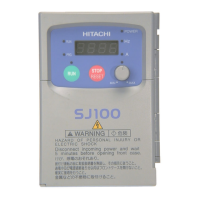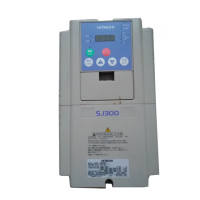2.7. Operating Principles
This section describes operating principles briefly.
2.7.1
Purpose of industrial motor control
A Hitachi inverter can vary three phase motor speed.
Varying speed can provide advantages in many
applications.
For example, it is useful for the purposes on the right.
2.7.2
What is an inverter?
An inverter can control the rotation speed and power
consumption of motors by changing the frequency and
voltage input to motors.
Motors waste energy running fans and pumps using a
commercial power supply and controlling the flow rate
using valves and dumpers. An inverter can lower the
commercial power supply frequency and voltage, which
contributes to energy savings by powering down without
valves and dampers.
An inverter is a device that converts direct current into
alternating current. The diagram below illustrates the
basic configuration of a general inverter.
First the converter part converts alternating current
supplied from the power supply into direct current
through the rectifier circuit.
The inverter part outputs frequency and voltage flexibly
by outputting the direct current “chopped” by switching
devices to the motor (PWM output).
The volume of the sound and noise generated by the
motor varies depending on the rate of chopping DC
voltage of switching devices (carrier frequency) in the
inverter part.
A
Energy savings
Ex.) HVAC (air-conditioner); fans; pumps
Adjacent processes requiring speed adjustment
Ex.) textile machines; printing machines
Load requiring torque
Ex.) machine tools; processing machines; transportation
equipment
Load requiring fine control
Ex.) elevators; food processing; medical devices
Rectifier
circuit
Motor
Inverter Converter

